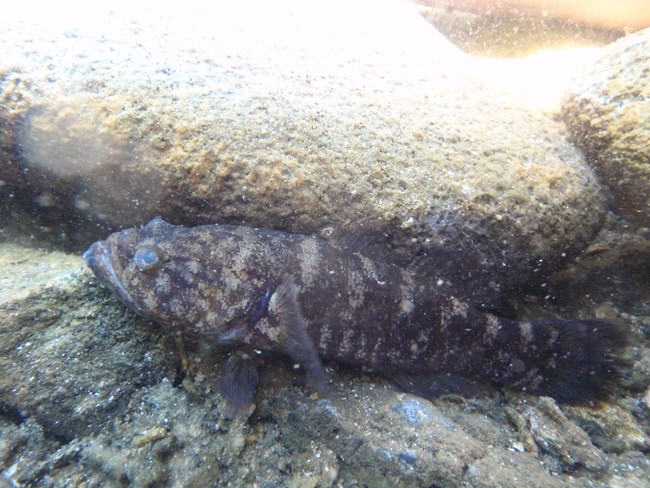Last updated: July 25, 2024
Article
Stream Life in Hawai‘i National Parks

Headlines often mention climate change causing coral bleaching and sea level rise, but what happens to Hawai‘i stream life?
Changes in weather patterns affect the quantity and quality of the water, which has profound effects on our native stream animals. In the Hawaiian Islands, the total amount of rain is expected to decrease as the impacts of climate change manifest. However, the frequency and severity of storms are expected to increase. Rigorous studies have prompted us to anticipate that there will be more rain in the summer months (the “dry” season) and less rain during the winter months (the “rainy” season). This will cause significant variation in stream discharge, the amount of water flowing from the stream. This predicament also threatens the native stream fish, shrimp, and snails that rely on a connection to the ocean in order to complete their life cycles.
All of Hawai‘i’s native stream animals are amphidromous, which means larvae hatch in the stream then wash out to the ocean where they develop for up to a few months. The juveniles then return to the stream and mature into adults. Decreases in rainfall lead to more frequent drought conditions, which could interrupt this crucial stream-ocean connection. This occurrence limits both the larvae from washing out to the ocean as well as limiting juveniles from recruiting back up into streams. In addition, many stream animals become relegated to pools in times of low flow.


Left image
"Normal" flow conditions near the mouth of a stream at Haleakalā National Park.
Right image
Drought conditions near the mouth of a stream at Haleakalā National Park.
A decrease in overall rainfall may increase drought events that can lead to changes in water quality. Oxygen is an important water quality parameter that is critical for all life. Stream animals obtain all their oxygen from what is dissolved in the water. With less water flow, the temperature of the water can increase. Warmer water absorbs less oxygen than colder water because gases dissolve better in colder water. Additionally, with reduced flow there is reduced oxygenation of the water from tumbling over waterfalls or around rocks. Lack of flow and warmer temperatures promote plant and algal growth, which consumes even more oxygen. The algae eventually die and decompose, further depleting oxygen stores
Though some animals may be able to tolerate severe low oxygen levels, even moderately low oxygen levels can affect their reproduction because egg production requires significant oxygen. Many organisms, especially fish, are very oxygen-dependent and could die if not enough oxygen is available to them.
In an effort to track the health of stream animals in the throes of a changing climate, the Pacific Island Inventory & Monitoring Network monitors stream animal populations as well as water quality parameters (including dissolved oxygen) in streams at Haleakalā National Park, Kalaupapa National Historical Park, War in the Pacific National Historical Park, and the National Park of American Samoa. Let's hope these fragile animals aren't forced to hit too many warm, oxygen-depleated pools as the climate changes.
– A. Farahi, NPS Biological Science Technician (I&M), 2015
For More Information
Pacific Island Inventory & Monitoring Network
Inventory & Monitoring at Haleakalā National Park
Inventory & Monitoring at Kalaupapa National Park
Inventory & Monitoring at National Park of American SamoaInventory & Monitoring at War in the Pacific National Historical Park
Download PDF from the Data Store
Tags
- haleakalā national park
- kalaupapa national historical park
- national park of american samoa
- war in the pacific national historical park
- pacn
- im
- monitoring
- hawaii
- streams
- climate change effects
- haleakala national park
- kalaupapa national historical park
- national park of american samoa
- war in the pacific national historical park
- climate change
- kalaupapa research
- pacific island network
